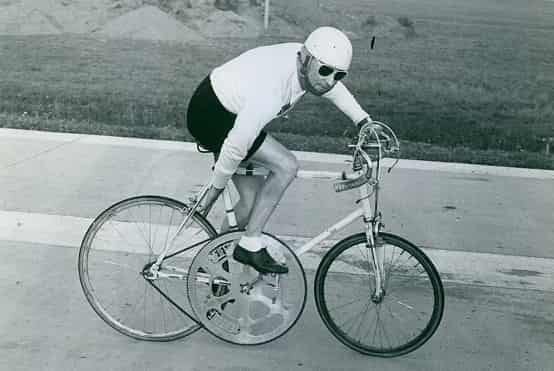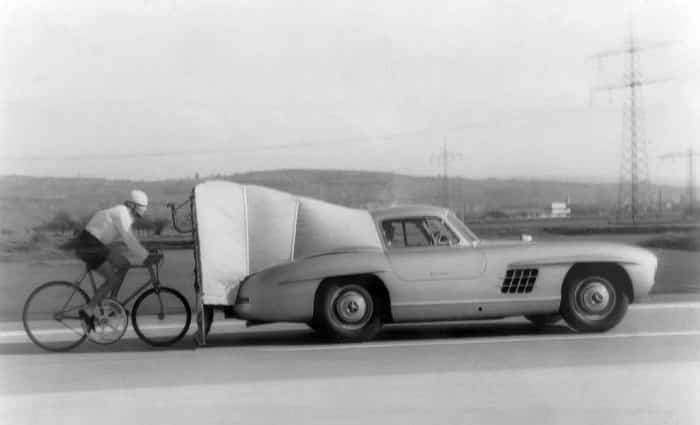Jose Meiffret: The Man Who Rode a Bicycle Faster Than a Car

Have you ever wondered how fast a person can ride a bicycle? Most cyclists ride at 10–20 miles per hour (16–32 km/h). Professional racers might hit 30–40 mph (48–64 km/h) on flat roads. But what if someone told you a man once rode a bicycle at 127 mph (204 km/h)? That’s faster than most cars on highways!
This incredible story is about Jose Meiffret, a French cyclist who set a jaw-dropping speed record in 1962. His achievement remains one of the most daring feats in cycling history. Let’s explore his life, the science behind his record, and why his legacy still inspires cyclists today.
Who Was Jose Meiffret?
Jose Meiffret was born in France in 1913. He grew up loving bicycles and spent his youth racing in local competitions. Unlike many cyclists, Meiffret wasn’t just interested in winning races—he wanted to push the limits of speed. He believed bicycles could go much faster than anyone imagined.
In the 1950s and 1960s, Meiffret became famous for attempting speed records on specially designed bikes. His goal was simple: to prove that human power, combined with engineering, could break barriers. But how did he plan to ride faster than a car? The answer lies in a technique called motor-paced cycling.
What Is Motor-Paced Cycling?
Motor-paced cycling is a method where a cyclist rides closely behind a motorized vehicle (like a car or motorcycle). The vehicle blocks wind resistance, allowing the cyclist to save energy and reach higher speeds. Think of it like a bird flying behind a plane—it uses the “slipstream” to move faster with less effort.
For Meiffret, motor pacing was the key to his record. But there were huge risks:
- Danger of Collisions: Riding inches behind a speeding car left no room for error.
- Equipment Failure: At extreme speeds, even a small mechanical problem could be deadly.
- Physical Strain: Maintaining control of the bike at 100+ mph required incredible strength and focus.
The Record-Breaking Ride: July 1962
On July 16, 1962, Jose Meiffret attempted to break his own speed record on a quiet German highway called the Autobahn. The Autobahn was perfect because it had long, straight sections with no speed limits.
The Bike: A Engineering Marvel
Meiffret’s bicycle was no ordinary bike. It was custom-built with:
- A Heavy Frame: Made of steel to handle high speeds.
- Special Gears: A single huge gear ratio (equivalent to 325 inches) to maximize pedal power.
- Aerodynamic Design: Slim tires, dropped handlebars, and a low riding position to reduce drag.
The Car: Mercedes-Benz 300 SL
A Mercedes sports car was modified with a large windshield to protect Meiffret from wind. The driver, Gerhard Mitter (a famous race car driver), maintained a steady speed while Meiffret followed just 2–3 feet behind.

The Ride
As the car accelerated, Meiffret pedaled furiously to keep up. Within minutes, he hit 127 mph (204 km/h)—a speed no cyclist had ever reached. The record was official, but the ride was far from safe. At one point, a tire blew out, and Meiffret narrowly avoided a crash.
Why Was This Record So Important?
Meiffret’s achievement wasn’t just about speed. It showed the world what humans could accomplish with courage and innovation. Here’s why his record matters:
- Pioneering Engineering: His bike inspired future designs for racing and aerodynamic bicycles.
- Human Potential: He proved that limits are meant to be challenged.
- Media Attention: Newspapers worldwide covered his story, making him a hero in France and beyond.
The Science Behind the Speed
To understand how Meiffret rode so fast, let’s break down the science:
1. Reducing Air Resistance
Air resistance (or drag) is the biggest enemy of speed. At 60 mph, over 90% of a cyclist’s energy fights drag. By riding in the car’s slipstream, Meiffret reduced drag by up to 90%.
2. Gear Ratios
Meiffret’s bike had a gear ratio so high that one full pedal rotation moved the bike 100 feet forward. Ordinary bikes move 15–20 feet per rotation.
3. Physical Fitness
Pedaling at such speeds required explosive leg strength. Meiffret trained for years to build the stamina needed for even a 5-minute effort.
The Risks and Challenges
Meiffret’s record was life-threatening. Here are some challenges he faced:
- Tire Explosions: At high speeds, friction could melt tires.
- Loss of Control: A bump or wobble could send him flying.
- Exhaustion: Maintaining speed demanded superhuman effort.
In fact, during a 1961 attempt, Meiffret crashed at 100 mph and suffered severe injuries. But he refused to give up.
Jose Meiffret’s Legacy
Meiffret died in 1983, but his record stood for decades. Modern cyclists like Denise Mueller-Korenek have since broken his record (183 mph in 2018), but Meiffret remains a legend. Here’s why:
- He Inspired Future Records: His methods paved the way for modern speed attempts.
- He Popularized Cycling: His daring rides made cycling exciting for the public.
- He Symbolized Perseverance: Even after crashes, he kept chasing his dream.
The Need for Speed
Jose Meiffret’s 127 mph record is more than a number—it’s a story of passion, danger, and innovation. He showed the world that bicycles aren’t just for commuting or racing; they’re machines capable of extraordinary feats. Next time you ride a bike, remember: with enough determination, even the impossible becomes possible.
